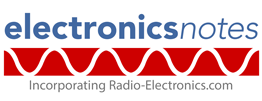Home » Component data » Transistor data » this page
TIP41, TIP41A, TIP41B, TIP41C Transistor Data
Key transistor data for the TIP41 NPN switching transistor including key electrical parameters, pinout, package type and many other key transistor datasheet details.
The TIP41 series of transistors are described as NPN epitaxial silicon transistors for linear switching applications and complementary to the TIP42 series of PNP transistors.
Although described as switching transistors they have also very successfully been used in many lear applications from power supplies to audio amplifiers.
These devices are now described as obsolete by many manufacturers, but they can be obtained from many second tier manufacturers.
Key details and performance parameters for the TIP41 transistor.
| TIP41 transistor datasheet parameters & data |
|
|---|---|
| Parameters | Details |
| Transistor type | |
| Package type | TO220 |
| VCBO max (V) | 60 up to 100 *** |
| VCEO max (V) | 60 up to 100 *** |
| VEBOmax (V) | 5 |
| VCEsat (V) | 1.5 @ I |
| IC max (A) | 6 |
| TJ Max °C | 150 |
| PTOT mW | 65 |
| fT min (MHz) | |
| COB | |
| hfe | 30 mon |
| IC for hfe | 0.3A |
| Similar / equivalents | |
Outline:
Pinout:
Explanation of transistor parameters
| Parameter | Explanation |
|---|---|
| VCBO Max | Maximum collector-base voltage with emitter open circuit . |
| VCEO Max | Maximum collector-emitter voltage with base open circuit. |
| VEBO Max | Maximum emitter-base voltage with collector open circuit. |
| VCEsat (included where applicable) | The voltage drop across the collector-emitter when the transistor is fully saturated (acting as a closed switch). |
| IC Max | Maximum collector current. |
| Parameter | Explanation |
|---|---|
| TJ | Maximum junction temperature. |
| PTOT Max | Maximum device dissipation normally in free air at 25°C unless other conditions indicated. |
| fT Min | Minimum cutoff frequency at which the current gain in a common emitter circuit falls to unity. |
| COB Max | Maximum collector capacitane, normally measured with emitter open circuit. |
| hFE | DC current gain for HFE at IC. [Note hfe is the small signal gain and although this may be slightly different, the transistor current gain will vary considerably from ne transistor to the next of the same type.] |
| PTOT Max | Maximum device dissipation normally in free air at 25°C unless other conditions indicated. |
These are the main transistor parameters that have been included in our list. There are others, but these help quantify the main elements of the performance of the transistor.
Please note, that the data given is the best estimate we can give within a tabulated summary of this nature. Parameters also vary between manufacturers. Electronics Notes cannot accept any responsibility for errors, inaccuracies, etc, although we do endevaour to ensure the data is as accurate as possible.
Notes and supplementary information
• Availability & sources
The TIP41 is available from a number of stockists and electronic component distributors many of which are given in the table below.
TIP41 Component Distributor, Stock and Pricing
• Maximum voltage
The TIP 41 has various maximum voltages according to the part number suffix, TIP41, 41A, 41B, 41C.
| TIP41 transistor datasheet parameters & data |
||
|---|---|---|
| Transistor type | VCBO max (V) | VCEO max (V) |
| TIP41 | 40 | 40 |
| TIP41A | 60 | 60 |
| TIP41B | 80 | 80 |
| TIP41C | 100 | 100 |
It is worth noting that the TIP41 is not always present on datasheets as it has a low operating imit. Sometimes only the A, B, and C versions may be seen.
• Manufacturers
Many companies have manufactured the TIP41 series transistors including Texas Instruments, On Semiconductor and many others.
• TIP41 vs TIP31
The TIP31 and TIP41 transistors are very similar in their characteristics, and they are virtually interchangeable.
They are both NPN bipolar junction transistors (BJTs) housed in the TO-220 package.
They are also general-purpose power transistors, commonly used in amplification and switching applications. A further similarity is the maximum operating voltages.
The main difference is that the TIP41 has maximum current ratings of 6 amps continuous and 10 amps peak against the TIP31 which can handle 3 and 5 amps respectively.
Generally the TIP41 is the 'beefier' device.
• Notable features
The TIP41 is a versatile NPN power transistor primarily used for general purpose power switching and amplification tasks.
- High Current Capability: The transistor is designed to handle a Collector Current (IC) of 6A (Continuous) and a peak of 10A, making it suitable for driving medium-power loads.
- Medium Voltage Rating: It features a relatively high Collector-Emitter Voltage VCEO) of 40V (for the standard TIP41A, B, and C variants offer 60V, 80V, and 100V respectively), allowing it to interface with common power supply voltages.
- High Power Dissipation: Packaged in a robust TO-220 casing, the device can dissipate up to 65W (with a suitable heatsink), ensuring reliable performance in power applications.
- Good Current Gain hFE): It provides a DC Current Gain hFE) of between 15 and 75, which is typical for a power transistor and allows a small base current to control a much larger load current.
- Complementary Pair Available: It is part of a complementary pair with the TIP42 (a PNP transistor), which simplifies the design of push-pull amplifiers and complementary symmetry circuits.
• Typical applications summary
| Application Category | Typical Use Case | Device Feature Utilised |
|---|---|---|
| Power Switching | Driving high-current DC loads such as solenoids, motors, and relays directly from a microcontroller or lower-power logic circuit. | High continuous Collector Current (IC = 6A) and Peak Current (10A) capability. |
| Audio Amplification | Output stage in medium-power push-pull or complementary symmetry audio amplifiers (when paired with the TIP42). | High Power Dissipation (65W) and the availability of the complementary PNP transistor (TIP42). |
| Voltage Regulation | Series pass element in linear power supplies to provide a regulated DC output voltage and current for a load. | Good Power Dissipation and moderate Current Gain, making it effective for dissipating excess power and maintaining regulation. |
| General Purpose Power: | Driver for lamps, power LEDs, or heating elements in various consumer and industrial control systems. | Robust TO-220 package and High Collector Current rating for driving substantial resistive or inductive loads. |
 Written by Ian Poole .
Written by Ian Poole .
Experienced electronics engineer and author.
Return to Component Data menu . . .





